Straight Life
Joe Henderson (saxo tenor), Freddie Hubbard (trompeta, fliscorno), George Benson (guitarra eléctrica), Herbie Hancock (piano eléctrico), Ron Carter (contrabajo), Jack DeJohnette (batería), Richard Landrum (batería, percusión) y Weldon Irvine (tabla, pandereta). Extraído del álbum Straight Life (1971) de Freddie Hubbard.
Este álbum se puede incluir dentro del estilo jazz-funk, pero envuelto en una producción más brillante y pulida. Está lleno de improvisación, tonalidad espectacular y energía. Casi todos los músicos que tocan en él habían grabado con el mítico trompetista Miles Davis en algún momento y Freddie Hubbard incorpora todo ese talento en el grupo. El jazz-funk es un subgénero del jazz que consiste en un marcado ritmo, la utilización de sonidos eléctricos y la aparición de los primeros sintetizadores analógicos. La mezcla de funk, soul y rhythm and blues con el jazz produjo la formación de un género cuyo alcance es bastante extenso, y que varía desde la pura improvisación jazzística hasta el soul, el funk o la música disco con solos, riffs y arreglos de jazz.
This album can be included within the jazz-funk style, but wrapped in a brighter and more polished production. It’s full of improvisation, spectacular tonality and energy. Almost every musician playing on it had recorded with legendary trumpeter Miles Davis at a certain point and Freddie Hubbard incorporates all that talent into the group. Jazz-funk is a subgenre of jazz that consists of a marked rhythm, the use of electric sounds and the appearance of the first analog synthesizers. The mixture of funk, soul and rhythm and blues with jazz produced the formation of a genre whose scope is quite extensive, ranging from pure jazz improvisation to soul, funk or disco music with solos, riffs and jazz arrangements.
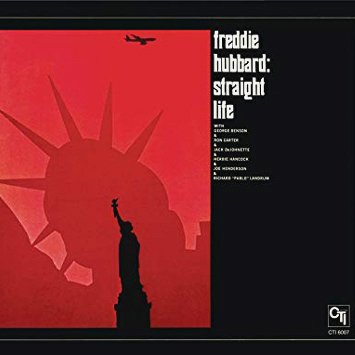
Al principio, a mediados de los años sesenta, el jazz-funk era una combinación de jazz y funky soul sureño inspirado por las innovaciones de Sly & the Family Stone. Era bastante similar al soul-jazz, pero mientras este último se recostaba en el ritmo, el impulso del jazz-funk era más fuerte y pronunciado. Muchos de los primeros artistas de jazz-funk fueron organistas, así como el saxofonista tenor Eddie Harris y el vibrafonista Roy Ayers entre otros. A medida que el soul se convertía en funk a principios de los años setenta, el rhythm and blues del jazz-funk fue cambiando. Músicos como la flautista Bobbi Humphrey, el trompetista Donald Byrd y el teclista Ronnie Foster crearon un estilo desenfadado interpretando composiciones que se parecían al rhythm and blues jazzístico. Teclistas como Lonnie Liston Smith y Herbie Hancock exploraron un estilo de jazz-funk más espacioso y atmosférico. El jazz fusión y el jazz-funk compartían muchas características a principios de los años setenta, pero el jazz fusión podía abarcar una mayor diversidad de influencias, mientras que el jazz-funk siempre mantuvo su devoción al rhythm and blues y conservó la vibración alegre y festiva del funk.
At first, in the mid-1960s, jazz-funk was a combination of jazz and southern funky soul inspired by the innovations of Sly & the Family Stone. It was quite similar to soul-jazz, but while the latter leaned on the rhythm, the impulse of jazz-funk was stronger and more pronounced. Many of the early jazz-funk artists were organists, as well as tenor saxophonist Eddie Harris and vibraphonist Roy Ayers among others. As soul became funk in the early 1970s, the rhythm and blues component of jazz-funk was changing. Musicians such as flutist Bobbi Humphrey, trumpeter Donald Byrd and keyboardist Ronnie Foster created a casual style by interpreting compositions that were similar to jazzy rhythm and blues. Keyboard players like Lonnie Liston Smith and Herbie Hancock experimented with a more spacious and atmospheric jazz-funk style. Jazz fusion and jazz-funk shared many features in the early 1970s, but jazz fusion could embrace a wider diversity of influences, while jazz-funk always maintained its devotion to rhythm and blues and retained the cheerful and festive vibration of funk.
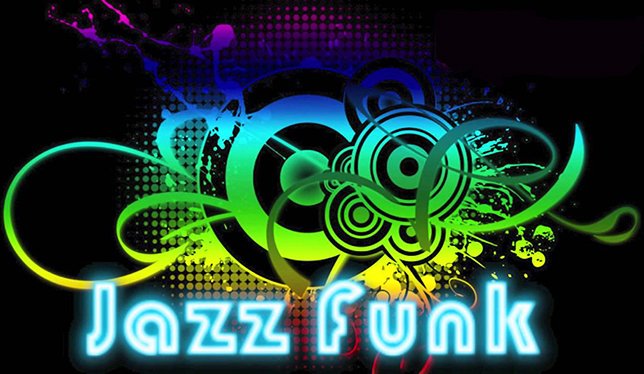
Así como el funk se convirtió en música de discoteca, el jazz-funk se fundió en el suave sonido de fusión del crossover que dominó el lado más accesible del jazz durante los años ochenta y noventa. Debido a su énfasis en ritmos bailables y funky, el jazz-funk se hizo muy popular en la escena musical underground británica cuando fue redescubierto a mediados y finales de los años ochenta; una versión actualizada mezclada con el funk y el hip-hop se conoció como «acid jazz». Por las mismas razones, el jazz-funk fue también el estilo al que recurrieron muchos artistas de hip-hop estadounidenses cuando buscaban formas de fusionar el jazz y el rap. Además, grupos como Medeski, Martin & Wood ayudaron a revivir el sonido clásico del jazz-funk y a llevarlo a audiencias más amplias en los años noventa.
Just as funk became disco music, jazz-funk merged into the soft fusion sound of the crossover that dominated the more accessible side of jazz during the 1980s and 1990s. Due to its focus on danceable and funky rhythms, jazz-funk became very popular in the British underground music scene when it was rediscovered in the mid to late 1980s; an upgraded version mixed with funk and hip-hop was known as “acid jazz”. For the same reasons, jazz-funk was also the style used by many American hip-hop artists when they were looking for ways to fuse jazz and rap. In addition, groups such as Medeski, Martin & Wood contributed to the revival of the classic jazz-funk sound and take it to broader audiences in the 1990s.
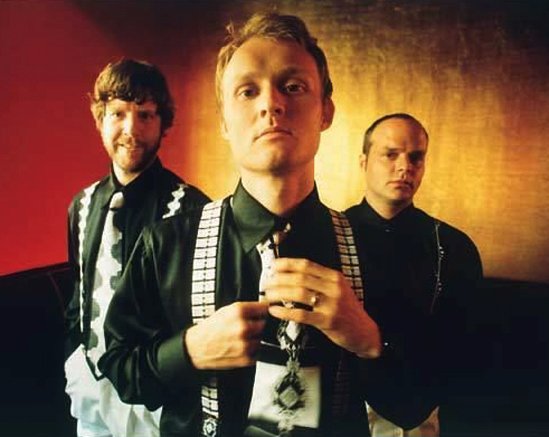
Hubbard hace la introducción haciendo algunas de sus gamberradas con la trompeta y manteniendo un diálogo con Landrum, y a continuación se incorpora el resto del grupo para exponer el tema. La melodía tiene un cierto sonido funky y es agradable al oído. Enseguida entra Henderson con un solo expresivo e imaginativo incluyendo todo tipo de motivos musicales y queriendo salirse de la escala. Luego Hubbard comienza tocando de forma prudente, pero pronto mete frases acrobáticas e impetuosas mientras Hancock lo anima por detrás, aunque al final se tranquiliza. Entonces llega Hancock de forma más sosegada con una línea melódica refinada y elegante utilizando acordes de vez en cuando. Le sigue Benson inventando frases cantables y melódicas con un discurso fluido y coherente que te hace escuchar con atención. A continuación le toca el turno a Landrum, que hace una intervención llena de contrastes, y luego vuelve Hubbard para disfrutar un poco más. Al final, el grupo reexpone el tema desvaneciéndose.
Hubbard makes the introduction doing some of his trumpet pranks and having a dialogue with Landrum, and then the rest of the group joins in to expose the theme. The melody has a certain funky sound and is pleasant to the ear. Right away Henderson enters with an expressive and imaginative solo including all kinds of musical motifs and wanting to get off the scale. Then Hubbard starts playing prudently, but he soon puts in acrobatic and impetuous while Hancock encourages him from below, although he calms down in the end. Next comes Hancock more calmly with a refined and elegant melodic line using occasional chords. He is followed by Benson inventing singable and melodic phrases with a fluid and coherent speech that makes you listen carefully. Now it’s Landrum’s turn, who makes an intervention full of contrasts, and then Hubbard reappears to enjoy himself a little more. At last, the group restates the theme fading out.
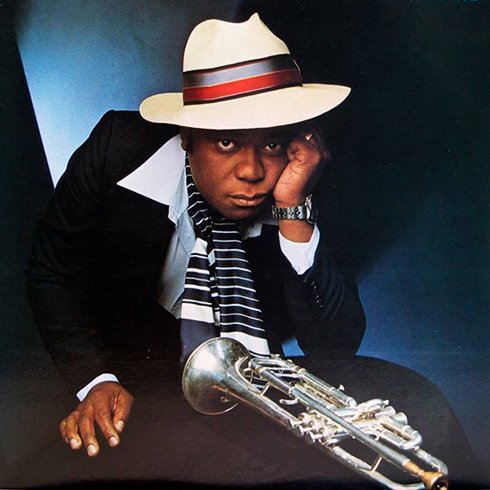
Translated with the help of DeepL

Mr. Clean
Joe Henderson (saxo tenor), Freddie Hubbard (trompeta, fliscorno), George Benson (guitarra eléctrica), Herbie Hancock (piano eléctrico), Ron Carter (contrabajo), Jack DeJohnette (batería), Richard Landrum (batería, percusión) y Weldon Irvine (tabla, pandereta). Extraído del álbum Straight Life (1971) de Freddie Hubbard.
Benson y la sección rítmica hacen una introducción y después Henderson y Hubbard se incorporan para exponer un tema muy funky a tiempo medio. El primero en entrar es Hubbard, que empieza tomándose su tiempo, pero poco a poco va calentando motores. Su interpretación es pausada y serena, pero llena de frases incendiarias. A continuación la banda toca un riff para dar paso a Henderson, que llega con un solo dinámico y percusivo, haciendo gorgoritos y lanzando gritos desgarradores piercing con el saxofón. Vuelve el riff y ahora Hancock entra comes in con un discurso sólido y convincente mientras Henderson y Hubbard le acompañan por detrás. Después el riff introduce a Benson, cuya línea melódica es irregular y juguetona introduciendo frases rapidísimas mientras Henderson y Hubbard también le acompañan. Para finalizar, el grupo vuelve a tocar el riff y reexpone el tema.
Benson and the rhythm section give an introduction and then Henderson and Hubbard join in to expose a very funky theme at medium tempo. The first one to enter is Hubbard, who starts by taking his time, but slowly gets his engines warm. His rendition is unhurried and serene, but full of incendiary phrases. Then the band plays a riff to give way to Henderson, who arrives with a dynamic and percussive solo, making gurgles and throwing piercing cries with the saxophone. The riff comes back and now Hancock comes in with a solid and convincing discourse while Henderson and Hubbard support him in the background. After that, the riff introduces Benson, whose melodic line is irregular and playful introducing very quick phrases while Henderson and Hubbard also support him. To end, the group plays the riff again and re-exposes the theme.
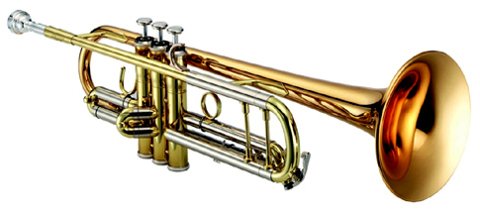
℗ CTI Records


¡Enhorabuena!
✅ Has hecho un buen trabajo, por lo cual tu publicación ha sido valorada y ha recibido el apoyo de parte de CHESS BROTHERS ♔ 💪
♟ Te invitamos a usar nuestra etiqueta #chessbrothers y a que aprendas más sobre nosotros.
♟♟ También puedes contactarnos en nuestro servidor de Discord y promocionar allí tus publicaciones.
♟♟♟ Considera unirte a nuestro trail de curación para que trabajemos en equipo y recibas recompensas automáticamente.
♞♟ Echa un vistazo a nuestra cuenta @chessbrotherspro para que te informes sobre el proceso de curación llevado a diario por nuestro equipo.
🏅 Si quieres obtener ganancias con tu delegacion de HP y apoyar a nuestro proyecto, te invitamos a unirte al plan Master Investor. Aquí puedes aprender cómo hacerlo.
Cordialmente
El equipo de CHESS BROTHERS